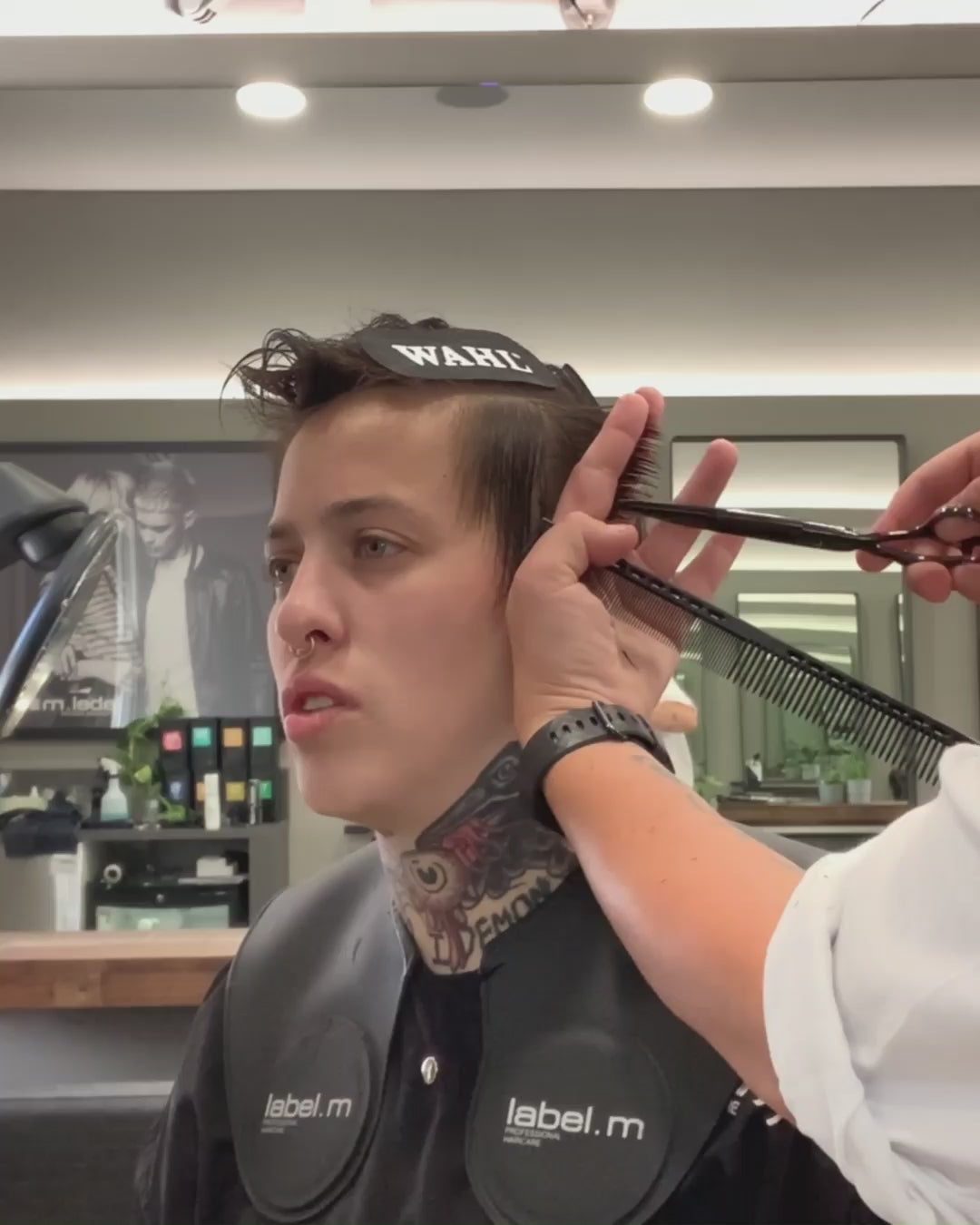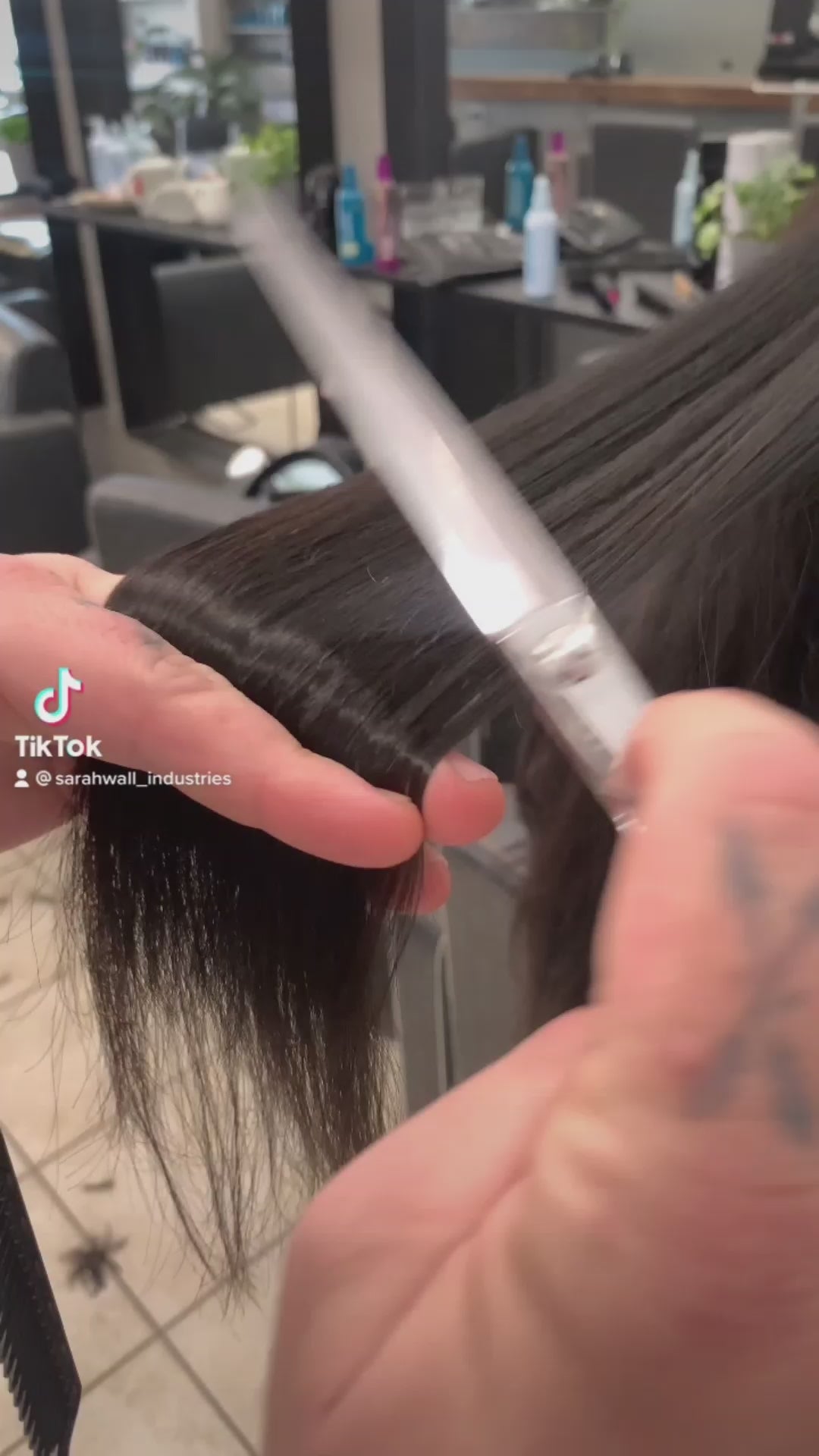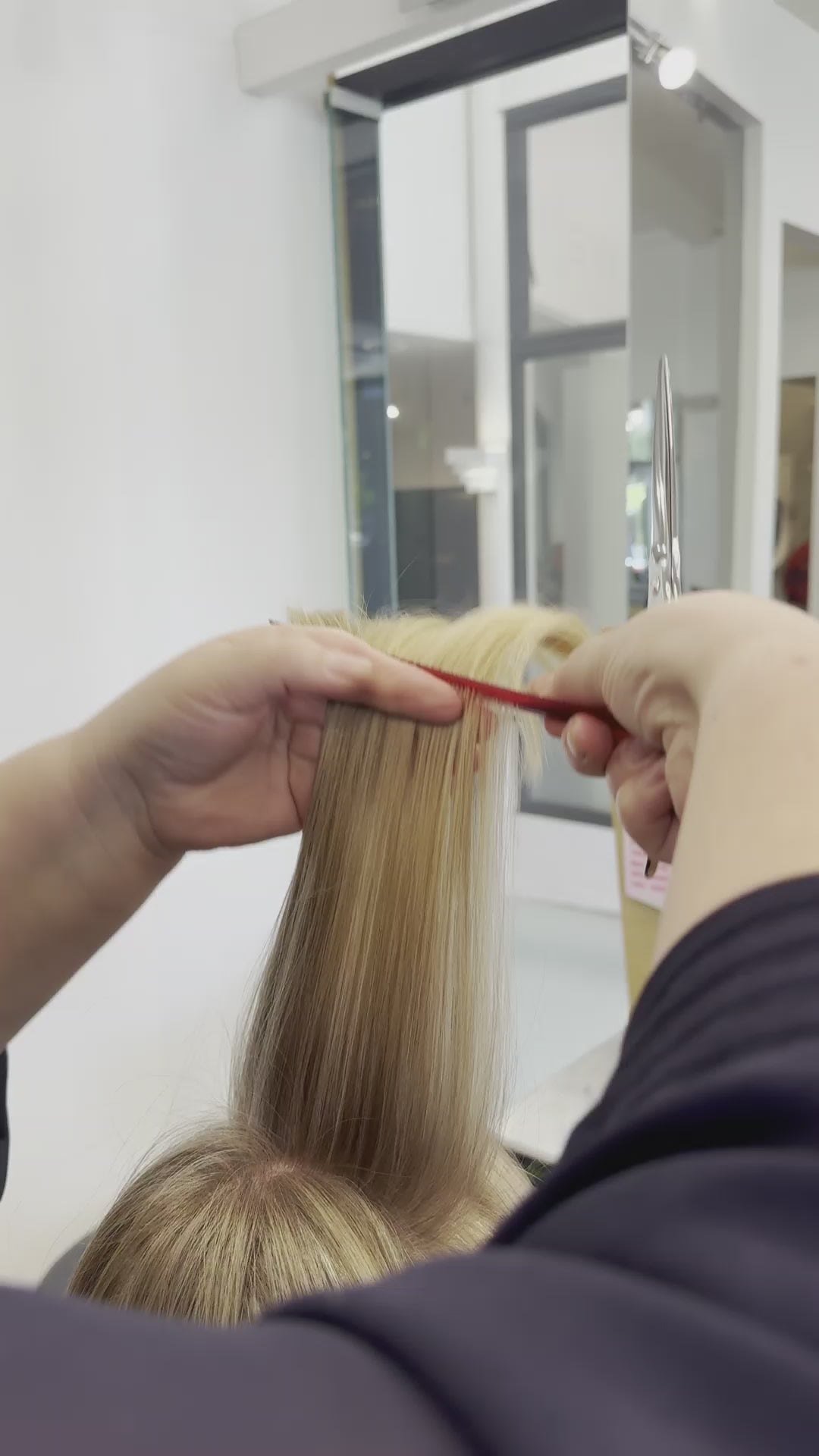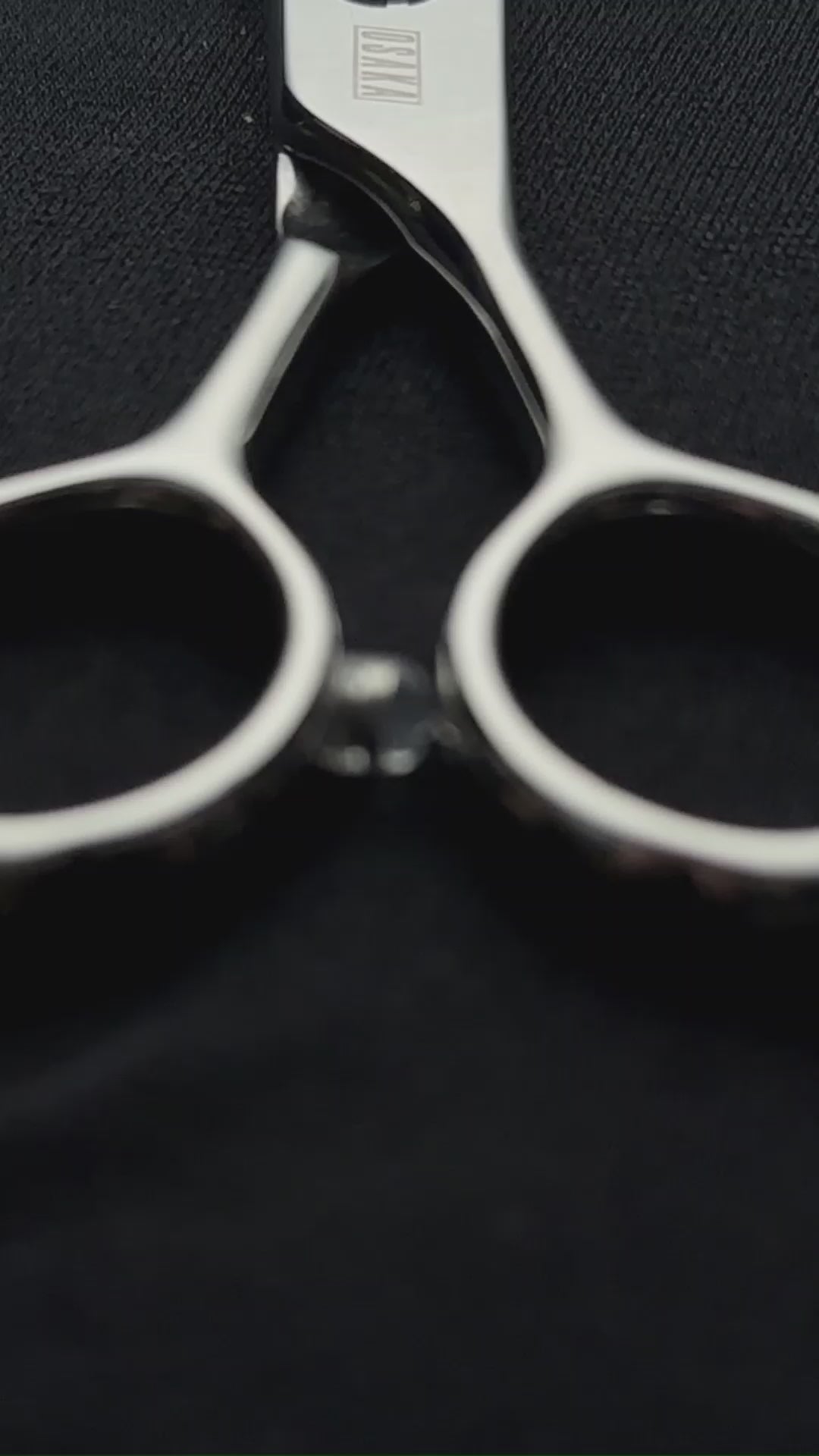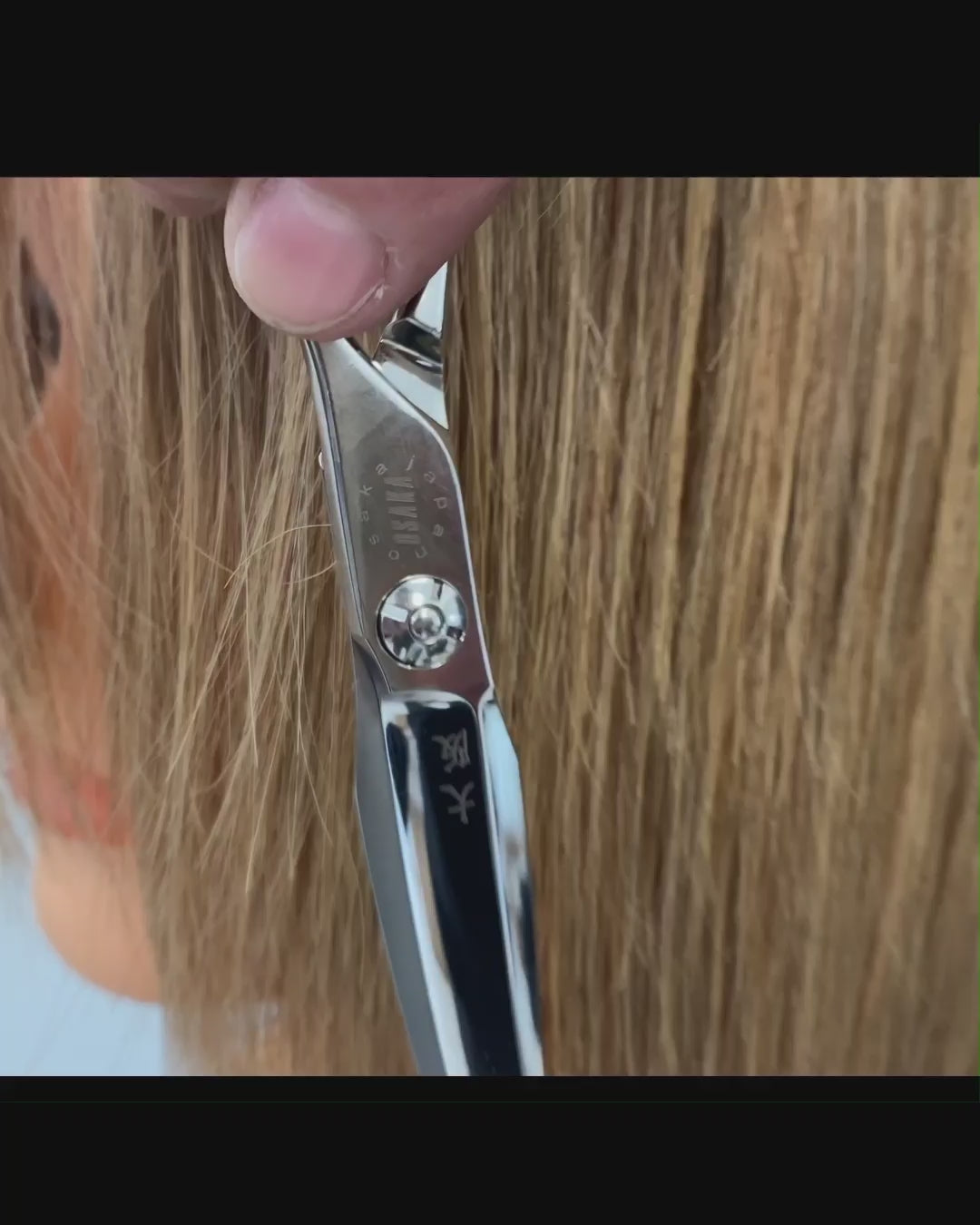Why Choose Offset Handle Scissors?
What if your daily tools were slowly ending your career without you even realising it? Many professional hairdressers continue cutting hair with traditional scissors, unaware that each snip brings them closer to chronic pain and potential injury. A Missouri hairdresser won her claim for compensation for carpal tunnel syndrome after years of cutting and styling hair, receiving over ten thousand dollars in workman's compensation benefits.
This real case highlights a growing concern across the industry—traditional scissor designs are contributing to career-ending injuries. Fortunately, offset handle scissors offer a scientifically-proven solution that can transform your cutting experience while still protecting your hands.

The Biomechanical Science Behind Offset Handle Design
Understanding why offset handle scissors work requires examining how they align with your body's natural mechanics. Unlike traditional straight-handle designs that force awkward hand positions, offset handles position the thumb ring forward, creating a more natural grip.
Wrist Deviation Reduction: Achieving Optimal Angles
Research in ergonomic tool design reveals that small angle adjustments make enormous differences in comfort and safety. Studies show that a 10° handle bend gave the best result among 0, 10 and 20 degrees of handle bend to prevent ulnar deviation, with discomfort reduced drastically with 0° to 10° of handle bend. When you use offset handles, your wrist naturally maintains a more neutral position rather than deviating to uncomfortable angles.
Muscle Load Distribution Analysis
The forward thumb positioning in offset designs fundamentally changes how force travels through your hand and forearm. Rather than putting all the strain on just a few spots in your hand, the ergonomic design spreads the workload across different muscle groups. This improved distribution means your hands work more efficiently with less effort.
Measurable Performance Gains: Clinical Evidence
Professional hairdressers need concrete evidence before investing in new tools. Extensive clinical research provides quantifiable benefits that justify choosing offset handle scissors over traditional designs.
Significant Reduction in Wrist Pain (Clinical Study Results)
Clinical trials measuring pain levels show remarkable improvements with ergonomic scissor designs. In controlled studies, perceived pain scores were significantly less for hand/wrist areas, with participants reporting substantially reduced discomfort. Overall pain intensity decreased from 5.0 to 2.6 points on standardised visual analogue scales.
Decreased Grip Force Requirements
Ergonomic designs require less muscular effort to maintain control. The improved mechanical advantage of offset handles means you achieve the same cutting precision with reduced grip force. Lower force requirements translate to less hand fatigue and more consistent cutting performance.
Dramatic Increase in Neutral Wrist Positioning
Research demonstrates that the time spent in the neutral position of the wrist increased from 27.7% to 72.6%, whilst working with hands above shoulder level decreased from 53.2% to 17.2%. Maintaining neutral wrist positioning for nearly three-quarters of your cutting time provides enormous protective benefits against repetitive strain injuries.
Japanese Steel Engineering Meets Ergonomic Innovation
OSAKA marries old-school Japanese craftsmanship with modern ergonomic science. This marriage of premium materials and scientific engineering creates tools that perform exceptionally whilst protecting your long-term health.
Hitachi 440C Steel Properties and Edge Retention
The foundation of any professional scissor lies in its steel quality. Hitachi 440C steel offers exceptional hardness and edge retention properties that maintain sharpness through thousands of cuts. Superior edge retention means your scissors stay sharp longer, requiring less frequent sharpening whilst reducing cutting force.
Precision Manufacturing Tolerances for Ergonomic Handles
Creating effective offset handles requires precise manufacturing tolerances that ensure consistent ergonomic benefits. OSAKA's Japanese manufacturing processes maintain exact specifications for handle angles, finger rest positions, and thumb ring placement.
Offset vs. Traditional Handle: Technical Comparison
Direct comparisons between offset and traditional designs reveal significant technical advantages that impact both comfort and cutting performance.
Reduced Thumb Travel Distance
Offset designs position the thumb ring closer to your natural thumb position, reducing the distance your thumb must travel during cutting motions. This shortened travel distance decreases fatigue and allows for more precise control during detailed cutting work.
Cutting Angle Optimisation and Blade Control
The offset handle design creates optimal cutting angles that improve blade control and cutting precision. The ergonomic positioning allows you to maintain better visual contact with your cutting line whilst keeping your wrist comfortable.
Force Vector Analysis
Offset handles change how cutting forces transfer through your hand and arm. The improved force vectors reduce stress concentrations in vulnerable areas like the wrist joint and thumb base, contributing to long-term hand health.
Professional Applications: Where Offset Handles Excel
Specific cutting techniques benefit dramatically from the enhanced control and reduced strain that offset handles provide.
Point Cutting Precision Enhancement
Point cutting requires exceptional precision and steady hand control. Offset handles provide the stable platform needed for accurate point cutting whilst reducing hand fatigue during these detailed techniques.
Slide Cutting Stability
Slide cutting demands smooth, controlled movements that maintain consistent blade angles. The ergonomic design of offset handles provides enhanced stability during sliding motions, creating smoother cuts with less effort.
Texturising Control Improvements
Texturising techniques require rapid, precise movements that can quickly fatigue hands using traditional scissors. Offset handles reduce the muscular effort needed for repetitive texturising motions whilst maintaining cutting accuracy.
Long-Term ROI Depends on Your Tools
Good ergonomic tools aren't just about feeling better today—they're about still being able to cut hair when you're 60.
Injury Prevention: Carpal Tunnel Statistics
Industry statistics reveal alarming injury rates among hairdressers. On average, the highest 12-month MSD prevalence was reported for the lower back (range 13–76%), neck (range 9–58%), shoulder (range 28–60%) and hand/wrist (range 11–53%). Even more concerning, 21.8% of hairdressing apprentices had left the trade, with 70.4% citing health complaints as the primary reason.
Extended Working Hours Without Fatigue
When your tools work with your body instead of against it, you can push through those long days without your hands screaming at you. That means more clients, better cuts, and a fatter paycheck.
Tool Longevity and Maintenance Benefits
When you're not death-gripping your scissors all day, they actually hold up better.
The reduced grip pressure and improved cutting mechanics result in less wear on moving parts and cutting edges.

OSAKA's Offset Handle Technology Specifications
OSAKA Scissors incorporates specific technical innovations that maximise the ergonomic benefits of offset handle design.
3D Handle Geometry and Finger Rest Design
OSAKA's advanced 3D handle geometry creates optimal finger positioning for various hand sizes. The carefully designed finger rests provide stable contact points that enhance control whilst reducing pressure concentrations.
Weight Balance and Center of Gravity Optimization
Proper weight distribution is crucial for comfortable scissor use. OSAKA engineers carefully balance each scissor to minimise hand fatigue whilst maintaining cutting precision.
Professional Sharpening Service Integration
OSAKA provides professional sharpening services that maintain the precision edge geometry essential for both cutting performance and ergonomic benefits. Sharp scissors require less force, supporting the ergonomic advantages of the offset handle design.
Experience OSAKA's Offset Handle Collection
OSAKA has been making top-tier scissors for over 30 years, so we know what works. Our offset handle collection—from the IKA and Mikazuki models to complete sets—covers every cutting technique you can think of.
We use premium Japanese steel for every pair and back them with a lifetime warranty against defects. Because when you find scissors that actually work with your hands instead of against them, you want them to last.
Complete Your Ergonomic Setup with OSAKA Accessories
Maximise your investment with OSAKA's professional accessories designed to complement your offset handle scissors. We've got everything else you need too—quality leather pouches, professional sharpening, the whole package. Three decades of Japanese craftsmanship isn't just marketing speak—you'll feel it in every cut. Check out OSAKA Scissors and see what your hands have been missing.





